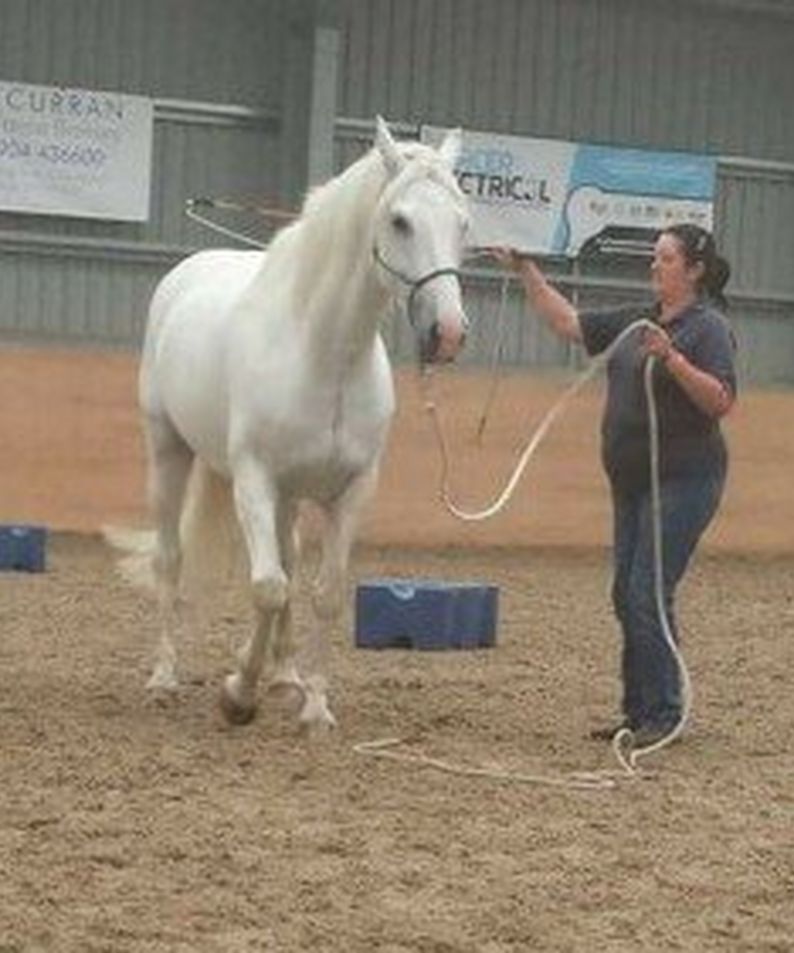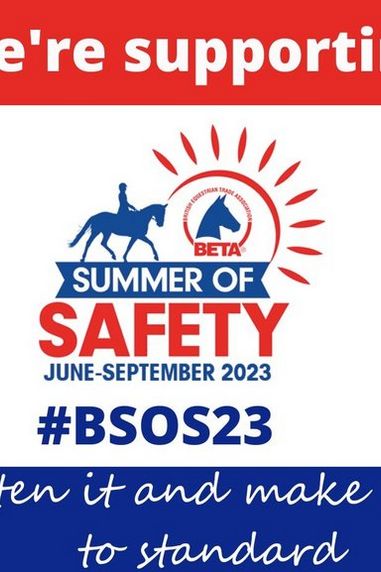
This blog is written from my perspective to help people to understand the differences between natural horsemanship and traditional horse training. I have over 30 years experience with horses, have gone down the British Horse Society route and have also been lucky enough to train in Colorado with the Parelli’s back in 2010. Although natural horsemanship has become more popular over the last couple of decades, I do still see / hear of a lot of haters and sceptics out there!
So what is natural horsemanship?

Natural Horsemanship is known as horse whispering, although it really isn’t as mystical and magical as that. Natural Horsemanship is a way of reading and understanding horse behaviour, using body language to communicate effectively with your horse. It’s about building a partnership that is equal between horse and human.

So what is traditional horse training?
Traditional Horse Training stems from the Military and early domestication of the horse. More recent associations that promote traditional training methods are the British Horse Society, the Spanish Riding School and other European Riding Schools. These methods have been very successful at training horses to do what we want them to do. However, the horse must do and if it won’t do then the horse is not fit for the job.
Why choose one or the other training method?
I don’t think you have to choose traditional over natural and vice versa. Having experience of both sides I think everything has a time and place. I see the training and experiences I have had as another tool in my box, what works for one horse doesn’t always work for another horse. I believe it is good to be open minded about all forms of training as long as they are positive and do not bring any harm to the animal or human.
Many people have a natural gift, where they can communicate effectively with horses, they have a good way about them that is calming and understanding without being demanding, but yet still assertive. Being able to gain rapport and respect in equal balance.
Other people have to work really hard to communicate because they find it difficult in some way. However even if it doesn’t come naturally, if you really want it, you can achieve it and learn feel, timing and balance with the horse. I believe natural horsemanship is as much about training the horse as it is about training the human.
Instead of thinking “he just won’t do it”, ask yourself “why won’t he do it?” Is there an underlying issue as to why my horse “won’t” do what I ask?
- Is there a pain issue?
- Does my tack fit correctly?
- Does his back and teeth need attention?
- Most importantly, did I ask the question in the right way?
Sometimes we are quick to blame the horse, but really we need to look at ourselves first.

Traditional Horse Training Methods
In the past and I’m sure today there are trainers that use dominance, pain and fear to “break” the horse’s spirit. Many traditional methods involved hobbling the horse, tying him up until he stops struggling and fighting, and generally forcing the horse into submission with cruelty.
By depriving the horse of his natural flight instinct, he eventually gives up and and does as he is told – these horses are then ridden and used for work. Those that continue to use flight and fight against the trainer are deemed dangerous and not fit for the job.

I would like to think that the majority of trainers these days don’t want to inflict pain and punishment on the horse in order to make it rideable.
A fearful horse is not in the right state of mind to learn anything useful, and it can lead to a very dangerous horse that can only think of defending itself and escaping.
Although lunging, long reining, bitting and breaking methods may not have changed in huge amounts, most people take their time with the horse and do it with calm and sensible understanding that the horse needs to adjust to all the new and strange things we present to him.

We ask a lot of our horses that have a natural flight or fight instinct, so I do believe most horse trainers know that the horse needs to trust them in order to get the best results.
Unfortunately, there will always be cruel people in the world and this breaks my heart… There are trainers out there that do strap their horses down with draw reins, tight flash nosebands and harsh bits in the mouth.
I personally do not like all these contraptions as I believe that if you can train your horse to be calm and centred there is no need to create false outlines and strap your horse in. Your horse will be in a better frame of mind to learn when he is calm and relaxed.

Natural Horsemanship Training Methods
Natural Horsemanship is about bonding with your horse, teaching him to solve puzzles for himself, not micro-managing your horse, it’s also a learning curve for us as humans. Natural Horsemanship is about gaining your horse’s respect and confidence.
Many humans want everything now, they want a short cut, where as natural horsemanship “takes the time is takes, so it takes less time”. Building a partnership with your horse and building his confidence is more important than the task itself. Sensitising and desensistising to create a horse that is responsive without being reactive.

Understanding our horse’s behaviour can greatly improve your relationship. Ask why does he behave this way? Is this his innate nature or is this learned behaviour? Did you know that horses are left brain or right brain in the way they think. Did you know that horses are introverts or extroverts to varying degrees like us?
Have a look at the Parelli Horsenality Chart, see if you can see where your horse might sit on the chart… Did you know horses are left and right handed like us, which is why they favour one rein to the other? Perhaps this is why your horse spins to go in the opposite direction when on his least favourite rein on the lunge? Did you know horses are naturally claustrophobic?

Natural Horsemanship uses pressure and release techniques to teach the horse it has done the right thing, and you always reward the slightest try, even if just a tiny shift in weight. If the horse tries you release the pressure.
Other techniques involve approach and retreat, until the horse is confident with the plastic bag, ball, flag, umbrella, spray bottle, etc…
You can play with your energy and see if you can match and mirror each other. Rhythm builds relaxation so use this when playing with your horse, playing approach and retreat, friendly game, etc…
Natural Horsemanship is fun, there is no wrong or right way to do it, doing something is better than doing nothing at all. Be imaginative, progressive and forward thinking. Sometimes thinking outside the box can do wonders for your horse.
Ask yourself has your horse become stale from “working”? Quite often traditional training methods revolve around repetition in the school, gridwork, circles, sometimes it is intense and we forget about having fun and engaging the horse’s brain.

What if you could grab your horse’s attention, make him think you were really fun and interesting, don’t you think your horse would want to be with you and try his hardest for you?
Natural Horsemanship can teach you how to deal with everyday life in a calm, assertive and puzzle solving manner. Mainly because every horse will teach you something new, something you didn’t know about yourself.
Which method is the right one?
I firmly believe that natural horsemanship has wonderful results and creates a better partnership between horse and human. I also believe it can lead to dressage, show jumping, eventing, polo, hunting, happy hacking – it’s not all about playing and frolicking with your horse to which some people might seem like it will lead to nothing useful or constructive.
Maybe we’ve tried everything else and natural horsemanship is the next thing on the list or your last resort?
If we can train our horses kindly, with respect and reward I believe they will jump higher, piaffe with more collection, more rhythm, and most importantly be calmer and safer horses to be around.
You can incorporate play with work to stop everything being so serious, your horse will thank you for it and you will see an improvement when you do need to be serious.
Being a Natural Horseman doesn’t necessarily mean Parelli or Intelligent Horsemanship, or any of the other big names out there, although these are a great place to start and will give you guidance on how to get started from the ground up to riding.
Have a look at Karen Rolf she is a natural dressage rider, trainer and coach, how fantastic to be able to piaffe without a saddle or a bridle – doesn’t this prove we don’t need contraptions…?
Sometimes asking yourself what if my horse could…? What if we could do it this way or that? What would happen if I asked the question differently?
Horses are not machines and we can’t expect them to work like machines.

If you just took a moment to understand horses are prey animals and that humans are predators by nature, then you might realise how your relationship would work out if you behaved like a predator around your horse… Or why your horse might spook or take flight in certain situations, and how we can quickly make that situation worse by acting like a predator and not a partner…
Conclusion
I think I firmly sit in the natural horsemanship camp for starting or retraining a horse and for everyday fun and to break up the work we ask of our competition horses.
However, traditional methods are fine as long as they are done with kindness and patience. I believe the two can work hand in hand, consistency, praise and reward go a long way to making a horse feel good about doing what we ask of them.
Horses are so adaptable, beautiful and gentle by nature and they try so hard for us, I think it’s only right that we treat them with the same respect and learn to ask in the right way…
Think about how they see things, the situation, how they might feel when we just expect them to get on with it… You wouldn’t want someone to break your spirit, imagine how depressed you’d feel? Why would we want to do the same to a horse or any other animal for that matter..?
Just a word of warning, there are cruel people whatever camp you sit in, so I am not saying that you won’t find cruel trainers within natural horsemanship. Please ensure you vet and check out any trainer / training methods before trusting them with your beautiful four legged friend the horse…
A huge thank you to Karen Rolf (Dressage Naturally), Graham Pickup (Parelli UK), Kelly Marks (Intelligent Horsemanship) and my friend Gillian Geoghegan for providing such wonderful images for my blog….





